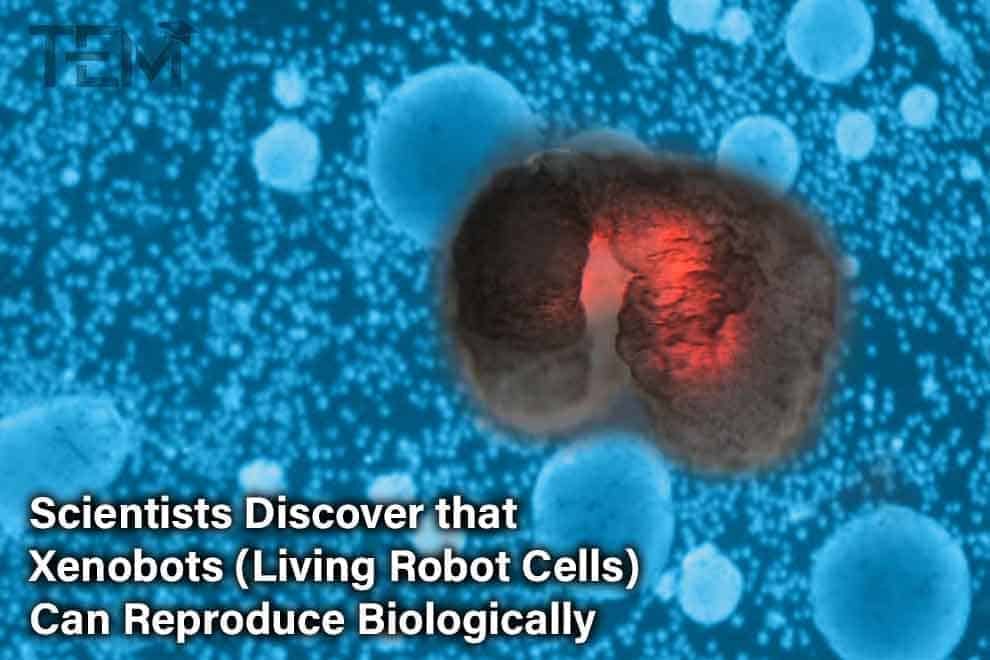In a recent scientific breakthrough, scientists who created the Xenobots first living robots have revealed that they can now reproduce.
According to the scientists, a never-seen-before type of replication in organic robots has been witnessed in the lab. These findings could suggest implications for regenerative medicine.
Capable of Biological Reproduction
Created using stem cells from the African Clawed Frog (Xenopus laevis), Xenobots are simple, programmable organism that is created by assembling the stem cells using a petri dish. The creation was published recently in the Proceedings of the National Academy of Sciences and is authored by a team of researchers from Tufts University, Harvard University, and the University of Vermont.
Xenobots are less than a millimeter wide and can move, work together as a group and possess the capability of self-healing. But in a piece of recent news, scientists who developed them have found that they can reproduce in an entirely new manner that is completely different from the biological reproduction of any living plant or animal.
According to Michael Levin, professor of biology and director of the Allen Discovery Center at Tufts University, “Frogs have a way of reproducing that they normally use. But when you liberate (the cells) from the rest of the embryo and you give them a chance to figure out how to be in a new environment, not only do they figure out a new way to move, but they also figure out apparently a new way to reproduce.”
AI Body-testing
This new form of reproduction suggests that xenobots effectively harvest loose stem cells—accumulating them into piles that can mature into xenobots. Scientists soon discovered that replication happened rarely with the original spherical-shaped xenobots, and only under specific circumstances.
These bots used a process known as kinetic replication that is known to occur at a molecular level but never seen on this scale, using entire cells or organisms. The researchers further used AI for testing a variety of new body shapes to maximize the stem cell harvesting process after realizing that the xenobots shape was hindering them.
‘Pac-Man’ Body Resemblance
The AI settled on a C-shape which resembles the iconic gaming character–Pac-Man.
“You can think about this like using the different cells [as] building blocks like you would build with LEGO or with Minecraft,” quoted Douglas Blackiston, a co-author of the study and a senior scientist at the Allen Discovery Center at Tufts University and the Wyss Institute for Biologically Inspired Engineering at Harvard University.
He further added that the xenobots propel themselves using tiny hair-like structures known as cilia. They showed a tendency of spinning in a corkscrew manner which is good for collecting piles of things such as other cells.
Significance of the Study
Every organism replicates itself by growing and generating offspring. Moreover, some molecules replicate by moving rather than growing. They seek and combine building blocks into self-copies. In the study conducted by the group of researchers, it was established that clusters of cells—if freed from a developing organism—can similarly find and combine loose cells into clusters that look and move like they do and that this ability does not have to be specifically evolved or introduced by genetic manipulation.
The study also reveals that AI can design clusters that better replicate and perform useful work as they do. This further suggests that:
- Future technologies may (if provided with some guidance) become more useful as they spread.
- Life harbors surprising behaviors just below the surface—waiting to be uncovered.
Researchers hope that one day these xenobots could be programmed to perform useful functions such as finding cancer cells in the human body or trapping harmful microplastics in the ocean.
Read more: How Neuralink ‘Merging Man And Machine’ Can Change The Future?










